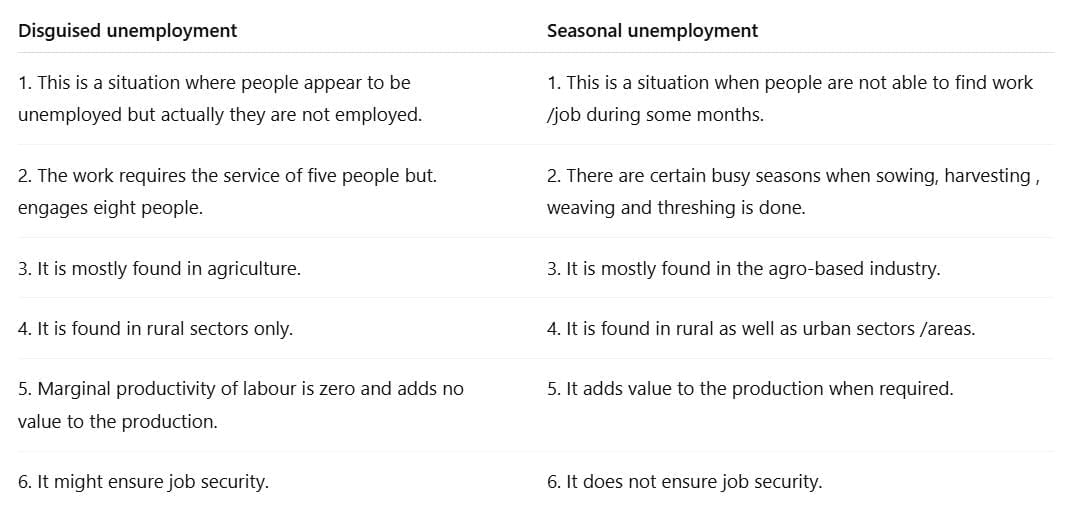NCERT Solutions for Class 9 Economics Chapter 2 - People as Resource
Q1. What do you understand by ‘people as a resource’?

Ans: ‘People as a resource’ is a term that means how the population can be an asset and not a liability. It is a way of referring to the working class of society in terms of their existing productive skills and abilities. The population becomes human capital when an investment is made in the form of education and training. Education and health also help human beings to be an asset to the economy. Thus, people as a resource refers to the working population that contributes to the development of society.
Q2. How is human resource different from other resources like land and physical capital?
Ans: Human resources is different in the following ways:
- Land and other resources are fixed, limited, and specified, whereas human resources can be nurtured through education and health.
- Human resources can change other resources, whereas others can not change or affect human resources.
- Human resources can make use of land and physical capital, whereas land and physical capital can not become useful on their own.
Q3. What is the role of education in human capital formation?
Ans: Education plays a very important role in human capital formation for the following reasons:
An educated human can be considered an asset for the economy and not a liability.
Education can help an individual make better use of economic opportunities. It helps in enhancing the national income, cultural richness, and increases the efficiency of the Government.
It enhances individual productivity in terms of quality and quantity.
Because being educated can help the economic status of an individual, it also develops the consciousness towards society.
An educated person is also aware of health and hygiene, and it will ultimately result in better health for the people of a country.
Q4. What is the role of health in human capital formation?
Ans: The role of health in human capital formation includes:
- Improved Immunity: Good health strengthens the immune system, reducing illness and absenteeism.
- Increased Productivity: Healthier individuals are more productive and efficient in their work.
- Economic Growth: Better healthcare leads to a healthier population, enhancing human capital and overall productivity, which drives economic growth.
- Quality of Life: Good health improves quality of life, enabling individuals to work effectively, earn more, and contribute positively to society.
Q5. What part does health play in the individual’s working life?
Ans: Health plays a crucial role in an individual's working life by influencing various aspects of productivity and performance:
- Improved Work Focus: Good health enhances concentration, enabling individuals to make decisions confidently and complete tasks efficiently.
- Increased Work Capacity: Healthy individuals can work longer without fatigue, allowing them to achieve more.
- Reduced Absenteeism: Maintaining good health leads to fewer sick days, resulting in better attendance and reliability.
- Enhanced Efficiency and Productivity: Healthier individuals tend to be more productive, positively impacting their overall work performance.
Q6. What are the various activities undertaken in the primary sector, secondary sector and tertiary sector?
Ans:

Primary Sector
- Comprises activities related to the extraction and production of natural resources.
- Agriculture, forestry, animal husbandry, fishing, poultry farming, mining, and quarrying are the activities undertaken in this sector.
Secondary Sector
- Comprises activities related to the processing of natural resources.
- Manufacturing is included in this sector.
Tertiary Sector
- Comprises activities that provide support to the primary and secondary sectors through various services.
- Trade, transport, communication, banking, education, health, tourism, insurance, etc., are examples of tertiary activities.
Q7: What is the difference between economic activities and non-economic activities?
Ans:
Q8. Why are women employed in low-paid work?
Ans: Reasons why women are often paid less than men:
- Less Education: Many women have lower levels of education compared to men, which affects the kind of jobs they get.
- Low-Paid Sectors: Women often work in areas that don’t offer good salaries or benefits like maternity leave or childcare support.
- Household Responsibilities: Women also manage household work along with their jobs, which limits their career growth.
- Skill Gap: Men are generally seen as more skilled than women, even when both do similar physical work.
- Result: Because of these factors, women usually end up in lower-paying jobs.
Q9. How will you explain the term unemployment?
Ans: Unemployment refers to a situation where individuals who are able and willing to work cannot find jobs. A person is considered unemployed if they are part of the workforce, capable of working, and actively seeking employment, but are unable to secure a position.
Q10. What is the difference between disguised unemployment and seasonal unemployment?
Ans: 
Q11. Why is educated unemployed a peculiar problem in India?
Ans:
- Educated unemployment is becoming increasingly prevalent in India.
- Despite having qualifications such as matriculation, graduation, and even post-graduation, many young people struggle to find employment.
- The Indian education system allows individuals over 18 years old to enter the workforce without ensuring they possess the necessary skills demanded by employers.
- Consequently, a significant number of educated individuals lack essential skills and face unemployment.
- It is crucial for individuals to not only obtain academic degrees but also acquire practical skills that align with the requirements of the job market to secure employment opportunities.
Q12. In which field do you think India can build the maximum employment opportunity?
Ans: The employment sector in India is divided into three main categories:
- Primary Sector: This includes agriculture, which employs a large part of the population. However, it often suffers from disguised unemployment, where more people are working than necessary.
- Secondary Sector: This sector encompasses manufacturing industries, which have the potential to create a significant number of jobs. The growth of these industries can lead to increased employment opportunities.
- Tertiary Sector: This includes services such as biotechnology and information technology, which are emerging fields that can also provide jobs.
Overall, the manufacturing sector within the secondary category is likely to offer the most employment opportunities in India due to the expansion of industries.
Q13. Can you suggest some measures in the education system to mitigate the problem of the educated unemployed?
Ans: To address the issue of educated unemployment, the education system can implement several measures:
- Promote Vocational Education: Encourage vocational training to prepare individuals for specific jobs, making it easier for them to find employment.
- Enhance Information Technology: Integrate more information technology into education to improve learning outcomes and equip students for modern workplaces.
- Job-Oriented Education: Align educational programmes with industry needs to boost students' employability.
- Expand Tertiary Sector Opportunities: Create more job opportunities in the tertiary sector to absorb the increasing number of educated job seekers.
- Career-Oriented Secondary Education: Introduce practical skills training at the secondary level to meet current job market demands.
Q14. Can you imagine a village that initially had no job opportunities but later came up with many?
Ans: Rampur was a small village that initially depended on agriculture, which was also dependent on rainfall. Then electricity reached the village, and people could irrigate their fields and could grow 2 to 3 crops in a year and get work. Some people set up small-scale industries that could be run by electricity and provided employment to people. A school was established, and now the population started to become educated and as a result, they could seek employment in and outside the village. The village became prosperous and soon had better health, education, transport and job facilities.
Q15. Which capital would you consider the best: land, labor, physical capital, and human capital? Why?
Ans: Human capital is valuable because it enables the effective use of natural and physical resources for development.
Countries like Japan, despite lacking natural resources, have advanced economically by investing in education and health, enhancing skills, innovation, and productivity.
This efficient use of human capital has made them leaders in technology and industry.
|
55 videos|525 docs|78 tests
|
FAQs on NCERT Solutions for Class 9 Economics Chapter 2 - People as Resource
| 1. What is meant by 'people as resource' in the context of human capital? |  |
| 2. How does education contribute to the development of human capital? |  |
| 3. What are the different types of human resources discussed in the chapter? |  |
| 4. Why is population growth seen as a challenge in the context of human resources? |  |
| 5. What role does health play in enhancing human resources? |  |






















